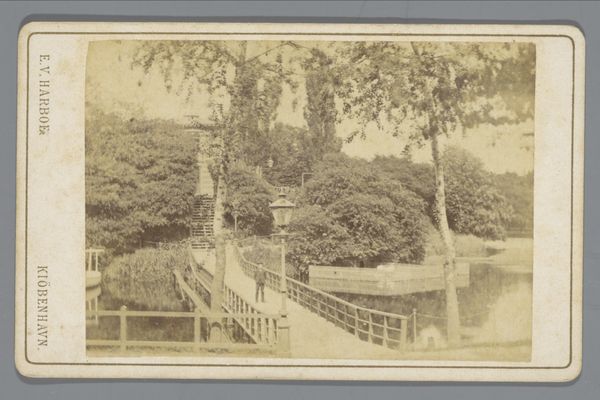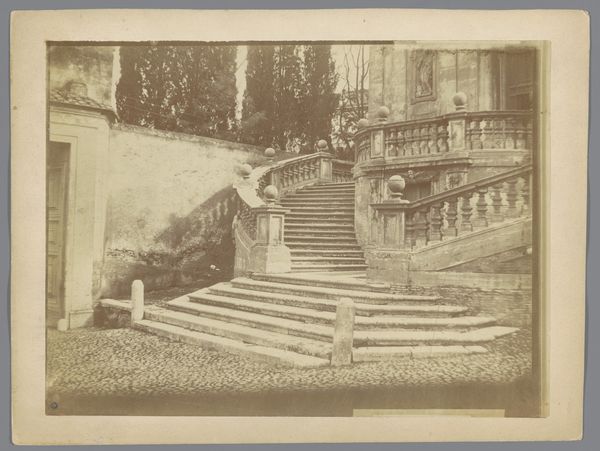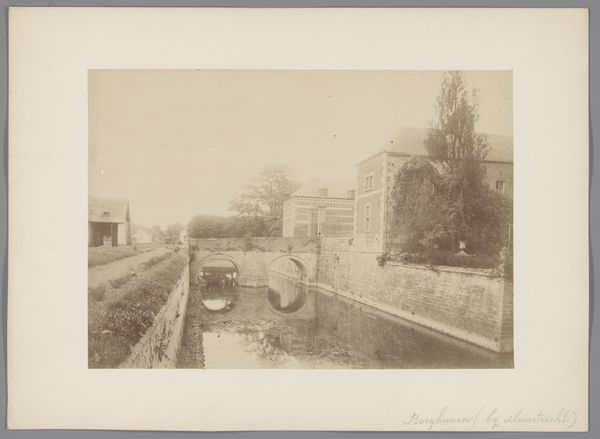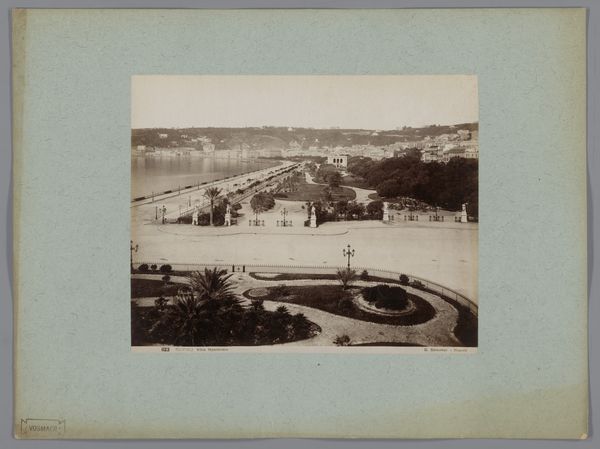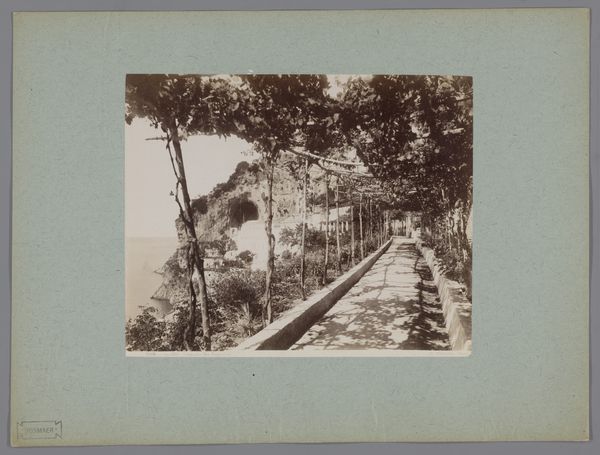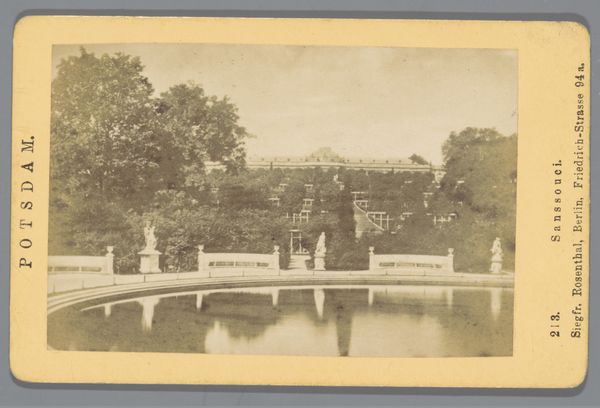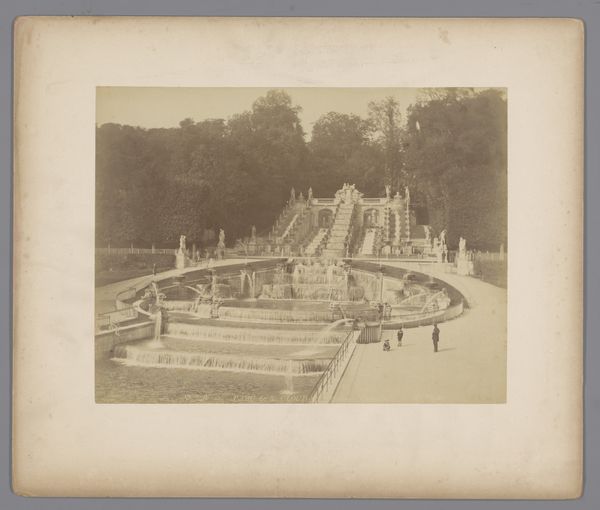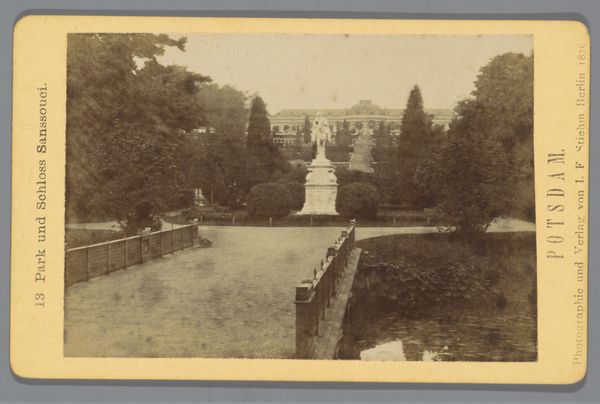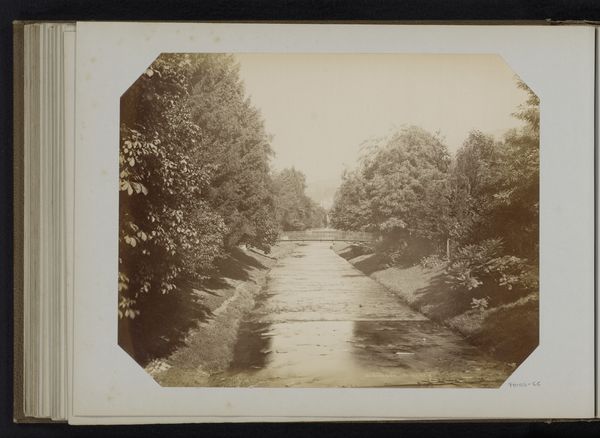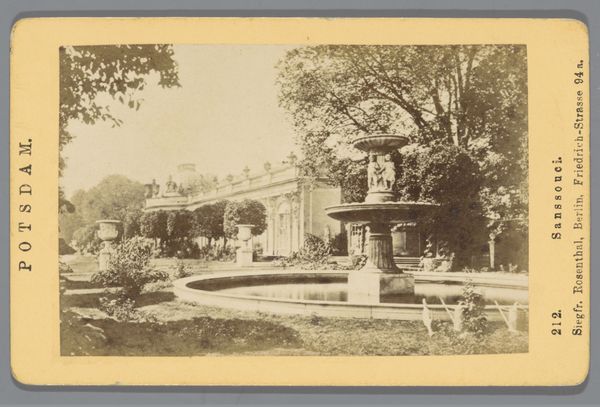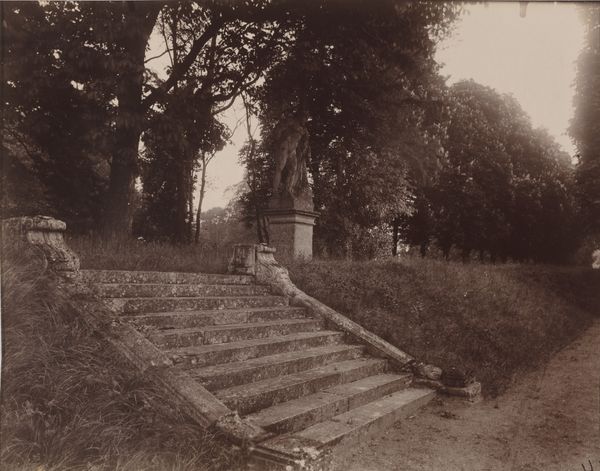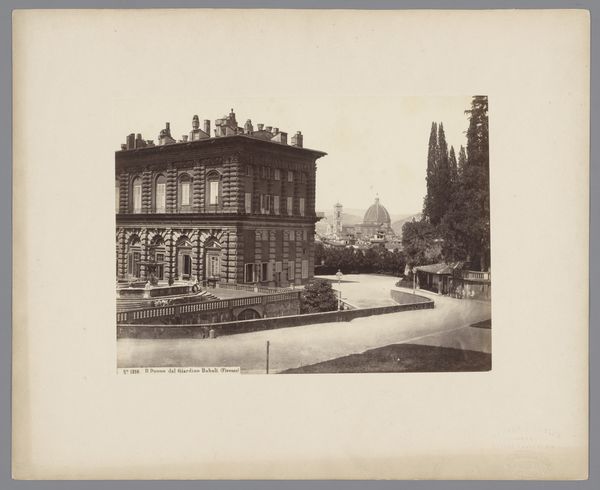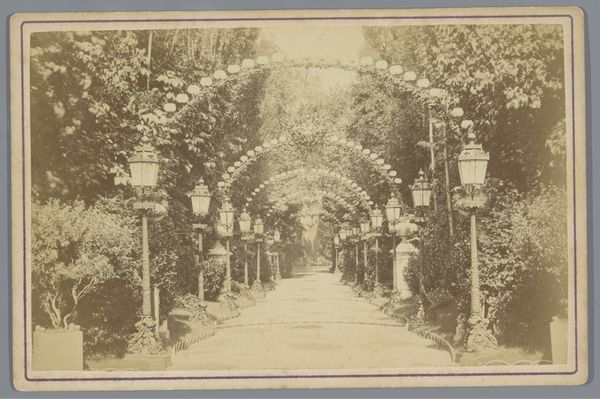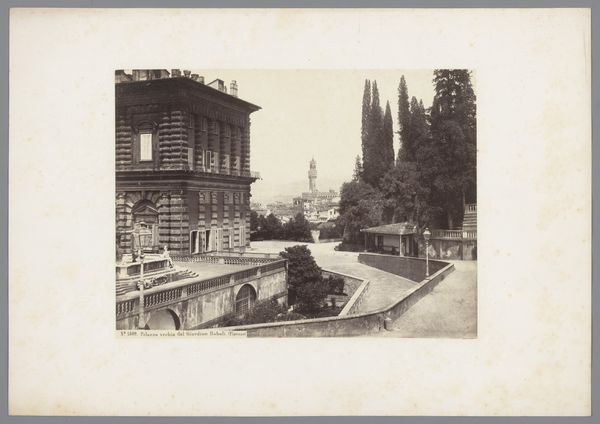
Gezicht op trappen van een villa (vermoedelijk) te Rome c. 1875 - 1900
0:00
0:00
photography, gelatin-silver-print
#
landscape
#
photography
#
classicism
#
gelatin-silver-print
Dimensions: height 207 mm, width 277 mm
Copyright: Rijks Museum: Open Domain
Editor: Here we have Gustave Eugène Chauffourier’s gelatin silver print, “Gezicht op trappen van een villa (vermoedelijk) te Rome”, dating from somewhere between 1875 and 1900. The architectural composition, particularly the stone staircase, is what stands out to me. What do you make of this photograph? Curator: I'm struck by the gelatin-silver printing process itself. We must consider the labor involved in preparing the glass plate, sensitizing it with silver halide emulsion, and then exposing it within the camera. This painstaking, hands-on approach connects the image to a specific moment in photographic history, a pre-digital era of craft and materiality. Notice, too, the subtle tonality, likely manipulated in the darkroom. This piece then isn't just a record of a place but the product of specific actions and technologies that inflect the image with meaning. What do you think Chauffourier wanted to show with this process? Editor: Perhaps it's a comment on how classicism was consumed in his time, the old juxtaposed with modern production. I am intrigued by the lack of people and the classical architecture – how do you see this piece in connection to classical art? Curator: We see an interesting friction here, a tension between the classicism represented in the Roman villa's architecture and the emergent modernism embodied by photographic reproduction. This "landscape" is, more accurately, about industrial modes of visuality turning the grand tour into something that can be mass produced and owned. Look closely – what do you see within the frame that would point to such tensions and friction? Editor: I guess I never considered photography as a product of industrial processes. This way of considering an artwork’s process adds more context to my viewing experience. Curator: Indeed, it reveals the layers of meaning embedded within the photograph's materiality, labor, and place within the history of photographic technology.
Comments
No comments
Be the first to comment and join the conversation on the ultimate creative platform.
